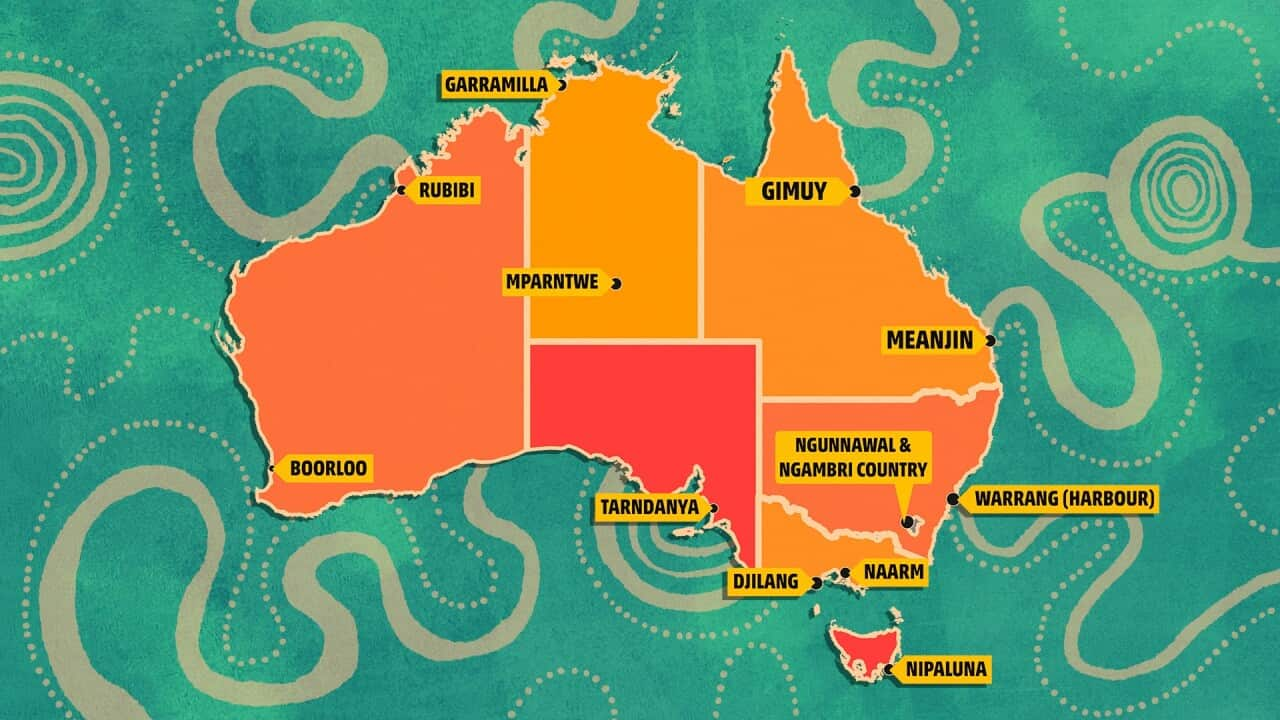Key Points
- The 2021 Census shows more Australians than ever are identifying as First Nations.
- This compares with Census figures showing the total increased by 8.6 per cent between 2016 and 2021.
The 2021 Census shows more Australians than ever are identifying as First Nations. This week on Insight, in a special NITV-Insight co-production, “Indigenous Identity” asks why are more people identifying. Watch Tuesday, 18 October from 8:30pm on SBS On Demand.
The 2021 Census reported a 25 per cent increase in the Indigenous population in the five years since the previous census.
This compares with Census figures showing the total Australian population increased by 8.6 per cent between 2016 and 2021.
In a phenomenon University of Sydney post-graduate student and Wiradjuri woman Suzanne Ingram described as “race-shifting”, people, who for the bulk of their lives have identified as non-Indigenous Australians, are now “box-ticking” ‘Indigenous’ as their identity in the Census, at workplaces, within cultural institutions and in educational settings, to name just a few.

The Commonwealth’s three-point criteria for Indigenous identification includes: Indigenous by descent, self-identification as an Indigenous person, and acceptance by a registered Indigenous organisation.
There has been data to suggest that [the population] should actually be about 300,000 less.Suzanne Ingram
Critiquing the validity of the beyond birth rate increase in the First Nations population, Ms Ingram argued, if the newly identified group were to be tested against the three-point criteria, from the 812,728 people who self-identified as Indigenous, “there has been data to suggest that [the population] should actually be about 300,000 less.”
However, she explained the problem lies not only with the individual, but also rests upon the non-Indigenous “enablers” who accept the potential misrepresentation, without having knowledge or qualifications to know what is truthful and what is cultural identity fraud.
This is something that Australians really do need to start asking ourselves. … Otherwise, it's just going to erase Aboriginal persons.Suzanne Ingram
University of Melbourne Professor, Bruce Pascoe, the award-winning author of Dark Emu, agreed this is a serious issue, telling Insight special host Karla Grant that he has witnessed the First Nations community change dramatically since he began identifying as a Yuin, Bunurong and Tasmanian man decades ago.
“I think we are in dangerous times, with that explosion of people identifying.”

Bruce Pascoe. Source: Getty / Getty Images
“What I have seen is recent identifiers coming with their income, and their education, usually acquired because they're not dark [skinned], skewing what is happening in local Aboriginal politics.”
I've seen these people assume positions of power, and literally push around both old men and women who they disagree with.Bruce Pascoe
Mr Pascoe believes bullying occurs between those who learned of their heritage and identified later in life, against those who were born and raised steeped in the heritage.
“I've seen these people assume positions of power, and literally push around both old men and women who they disagree with,” said Mr Pascoe.
Mr Pascoe has also faced criticism from some claiming his cultural identity is fraudulent.
“It’s very hurtful to be challenged all the time,” he said.
Yorta Yorta man Ian Hamm, a board member of the Healing Foundation, an advocacy organisation that supports members of the Stolen Generations, holds similar concerns regarding the population increase.
“What is the life expectancy of Aboriginal people per se, off the 2022 set of data with this huge growth rate? Will that life expectancy rate take a sudden skew one way or the other?”
“A referendum on the Voice to Parliament, and for the states now doing Treaties, what will this population explosion mean?”

Dr Stephen Hagan, a Kullilli man from Queensland said the burden of proof “is not [upon] those people claiming to be Aboriginal."
However, he asserts there are serious negative consequences for Indigenous people who ask the newly-identified about their heritage. Recalling occasions when Dr Hagan has asked colleagues and associates the standard Indigenous protocol questions "Who's your mob? Where are you from?", to understand a person’s Indigenous identity within the kinship structure, he said a common response nowadays is “that’s lateral violence”.
People are growing rich on our misery.Dr Stephen Hagan
Dr Hagan added the burden of proof “is not [upon] those people claiming to be Aboriginal. The onus is on the people who are challenging them. We don’t have the capacity, the financial resources to take them to Court.”
“They are protected. They can sign a statutory declaration [to confirm they self-identify] and they’re in. They can take on a $200,000 job anywhere they want.”
“People are being remunerated very handsomely to hold a lot of senior positions and in our business” and organisations.
“People are growing rich on our misery.
“This increase in fake Aborigines coming into the organisations. They are basically white people, they’re controlling the narrative of black affairs and they’re controlling the policy that will come out of these organisations.”

Pambalong woman Kumarah Kelly, CEO of Awabakal Local Aboriginal Corporation, with her father and Community Elder, Dr Ray Kelly. Kumarah Kelly calls out some newly-identifying people as “false Aboriginals” who she claims are “misrepresenting cultural knowledge and practices”.
There are false Aboriginal people state-wide.Kumarah Kelly
“We're seeing people participating in cultural site surveys for the protection of artefacts and sacred sites. They're making $1500 a day. Where did they get that cultural knowledge from?”
“If you find out that you're Aboriginal when you're in your late 40s, you cannot be a cultural knowledge holder, because it was not given to you from your people.

Kumarah as a child, sitting on her grandfather, Ray Kelly Senior's lap. Ray Kelly Senior is known for his work identifying sacred sites in New South Wales.
Ms Kelly does not hold faith in the 3-point criteria as adequate protection for culture and heritage.
“It is quite easy to receive a confirmation of Aboriginality. It is easy to infiltrate our organisations and our communities. There are false Aboriginal people state-wide."











